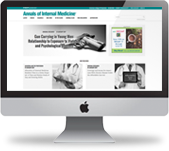Primary care preps patients perioperatively
An updated guideline on best practices for perioperative cardiovascular management offers critical changes to how primary care physicians can best assess and prepare patients for noncardiac surgery.
A long-awaited update on best practices for perioperative cardiovascular management offers critical changes to how primary care physicians can best assess and prepare patients for noncardiac surgery. Released jointly in September 2024 by the American College of Cardiology (ACC) and the American Heart Association (AHA), the recommendations—last updated in 2014—refine risk stratification, preoperative testing, and medication management, with a sharper focus on individualized decision making.
One of the most notable shifts is a more selective approach to preoperative cardiac testing, discouraging routine stress testing for low-risk patients while emphasizing functional status and shared decision making. The guideline also provides updated recommendations on the use of beta-blockers, statins, and antiplatelet therapy, addressing when to continue or withhold medications in the perioperative period.

The changes are especially relevant for primary care physicians, who are often the first to evaluate patients before surgery, said Annemarie Thompson, MD, MBA, an anesthesiologist at DukeHealth in Durham, N.C., and chair of the guideline writing committee.
“The primary care physician forms the hub of a multidisciplinary team that works to prepare the patient for surgery, get them through surgery, and help them recover,” she said. “The purpose of surgery is not just to get someone through a procedure but to restore or even improve their quality of life, and that's where the primary care physician is so very important.”
Key changes in risk stratification
Instead of stress tests in low-risk patients, physicians should assess their functional capacity through a structured questionnaire as a key determinant of surgical risk, the guideline said. Additionally, the use of risk calculators, such as the Revised Cardiac Risk Index (RCRI), and tools to assess frailty provide a more individualized approach to identifying high-risk patients who may need further evaluation.
“The new guideline moves away from terms like ‘clearing somebody for surgery’ and towards assessing the patient's individual cardiovascular risk around the time of surgery,” said Eli V. Gelfand, MD, section chief of general cardiology and director of outpatient cardiovascular clinics at Beth Israel Deaconess Medical Center in Boston. “Much more emphasis is placed on individualized testing and limiting unnecessary tests, especially before low-risk surgery.”
Experts recommend taking a stepwise approach to perioperative cardiac assessment. The guideline provides a practical flowchart with a suggested algorithm for decision making and adds several risk prediction tools that were not part of the previous guidance. (For more on risk calculators, see our related story.)
“We now have more tools to identify which patients would benefit from invasive cardiac testing, with the idea that there are very few,” said Dr. Thompson. “Physicians also should be aware that risk calculators, while good at identifying patients at increased risk for perioperative complications, don't capture the totality of cardiovascular conditions that contribute to perioperative morbidity and mortality.”
For example, she said, pulmonary hypertension often isn't factored into risk scoring systems even though it can raise the risk of perioperative complications and death, even from relatively minor procedures. The risk stems not just from surgery but from anesthesia, which can trigger hemodynamic instability in patients with severe pulmonary hypertension.
Similarly, while stroke is included in traditional risk calculators, new evidence suggests that patients who have had a stroke prior to surgery are at substantially greater risk of a recurrence, said Dr. Thompson. The committee suggests waiting at least three months after a stroke to schedule elective noncardiac surgery.
For low-risk patients, defined by the RCRI and other risk scores as having less than 1% risk of major adverse cardiovascular events, no preoperative testing is typically required, said Peter Oettgen, MD, FACP, a cardiologist at Beth Israel Deaconess Medical Center in Boston and editor-in-chief of the clinical decision support tool DynaMed.
For example, consider an EKG for patients receiving elevated-risk noncardiac surgery, but not for asymptomatic patients receiving low-risk surgery, he said. Order an echocardiogram for symptoms suggestive of heart failure, but not for asymptomatic stable patients.
“The key objectives for primary care physicians in preparing their patients for noncardiac surgery are to determine what preoperative testing is needed based on risk and to determine if any alterations in their medications are needed,” he said.
Avoiding overtesting
Begin the preop evaluation by assessing and optimizing all of a patient's medical conditions, such as diabetes or anemia, as opposed to focusing on coronary disease and whether to order a stress test, advised Kurt J. Pfeifer, MD, FACP, an internal medicine physician and perioperative specialist at the Medical College of Wisconsin in Milwaukee.
“This guideline really emphasizes that stress testing be limited to patients with poor functional capacity who are having higher-risk surgery, where the results will clearly change management,” he said. “And changing management usually means reconsidering the surgery or looking at alternative procedures, not prophylactically performing coronary revascularization.”
For the first time, the guideline committee identifies frailty as a risk factor for postoperative events and recommends six assessment tools, said Efrén C. Manjarrez, MD, FACP, assistant professor of clinical medicine at the University of Miami Miller School of Medicine, who uses the FRAIL Scale in his own practice. The tool produces a score from 0 to 5 based on factors such as ability to climb stairs, ability to ambulate, fatigue, and illness.
As a further measure of perioperative risk, the guideline suggests using the Duke Activity Status Index (DASI), which assesses patients' ability to perform a set of 12 daily activities, said Dr. Manjarrez. The committee cites evidence suggesting that the DASI score, used in combination with the RCRI or a similar risk scoring tool, is a more accurate predictor of adverse events and mortality than subjective assessment of functional capacity.
In patients with higher cardiac risk and unknown functional status (they can't ambulate, for example), the guideline recommends measuring B-type natriuretic peptide (BNP) and cardiac troponins as biomarkers of risk for perioperative cardiac complications.
“If during a preop exam a patient says they can't climb two flights of stairs without stopping due to shortness of breath, many physicians in the past might have ordered a stress test without thinking too much about it. But if the patient said the same thing in the context of a regular follow-up visit instead, a stress test probably wouldn't be your first line of testing, so it makes sense that it wouldn't be the very next step during a preop evaluation either,” said Katharine DeGeorge, MD, MS, a family medicine physician at the University of Virginia in Charlottesville and senior deputy editor of DynaMed. “With the updated guidance, we can use biomarkers to assess many patients with poor or unknown functional capacity without the need for a stress test.”
Primary care physicians play an important role in ensuring that any preoperative testing ordered is indicated and appropriate for individual patients, said Dr. DeGeorge. Some surgeons may send a long list of standard preoperative tests that they expect the primary care physician to order, many of which may be unnecessary or unrelated to the patient's risk profile or type of surgery.
“Tests such as urinalysis, chest X-ray, complete blood count, or INR often aren't indicated,” she said. “While it might feel easier to just order the tests and move on, it's actually an important opportunity for a primary care physician to communicate with a surgeon requiring unnecessary tests and inform or remind them about what the latest evidence actually says.”
Managing medications
New recommendations in the guideline provide clearer ways to manage cardiovascular medications before surgery. Beta-blockers should be continued if already prescribed but should not be initiated just before surgery. Statins should also be maintained, particularly in high-risk patients, the guideline said.
“Patients may be taking multiple medications for their daily cardiovascular health, and what to do about these in the perioperative period is complex because it's not just about the medication but why they're taking it,” said Dr. Thompson. “For example, the indication for anticoagulation may be a cardiac stent or because they have atrial fibrillation to prevent stroke. There are other factors to consider such as the type of surgery the patient is having.”
Guidance on anticoagulant or warfarin therapy was updated to account for some of those nuances, she said. For example, the committee recommends strategies for stopping or starting anticoagulants based on indication for anticoagulation, such as a mechanical heart valve or atrial fibrillation, and the risk of bleeding for specific types of surgery.
Notable in this update is a recommendation to discontinue sodium-glucose cotransporter-2 (SGLT-2) inhibitors three to four days prior to noncardiac surgery, when feasible, said Dr. Oettgen. These newer medications, indicated for diabetes management and heart failure, can elevate patients' risk of metabolic acidosis or euglycemic ketoacidosis.
However, it's no longer recommended that most patients discontinue metformin, if prescribed for diabetes or impaired glucose intolerance, said Dr. DeGeorge. Angiotensin-converting enzyme inhibitor therapy can be continued in most patients with controlled blood pressure, but physicians should consider stopping it 24 hours prior to surgery for high-risk procedures.
The guideline stresses that patients with heart failure, recent myocardial infarction, or atrial fibrillation require more focused management in the perioperative period. For example, anemia and sepsis should be aggressively treated in patients with atrial fibrillation, and a cardiology consultation is recommended to assess thrombotic risk.
Cardiology may be consulted in patients at high risk for surgery who require an urgent operation, said Dr. Gelfand. In addition to medication changes, the cardiologist may recommend performing a transesophageal echocardiogram or focused cardiac ultrasound in the operating room to monitor cardiac function.
Postsurgical care
Having a follow-up plan in place is critical to preventing complications after surgery, said Dr. Pfeifer. Prior to surgery, patients should be given instructions for when and how to restart any medications that were paused and to schedule a follow-up visit within two weeks of surgery.
Patients with diabetes who paused metformin or an SGLT-2 inhibitor should be instructed to check their blood glucose and blood pressure levels and alert their physician about any concerning changes, he said. Physicians may be hesitant to tell the patient to resume blood thinners in case there were bleeding problems during surgery, but it's better to have that plan in place unless the surgeon advises otherwise.
“Do not assume that all these medical issues get addressed in the post-op visit with the surgeon,” said Dr. Pfeifer. “The immediate follow-up with surgery is very focused on looking at the surgical site, while other things can get overlooked.”
Generally, physicians should ensure that patients are back on necessary medications and check the discharge summary for any errors or omissions, said Dr. DeGeorge. The follow-up visit is also an opportunity to go over the discharge instructions with the patient and check the surgical site for signs of infection or wound dehiscence.
Dr. DeGeorge also reviews any lab results obtained during or after the surgery and may order repeat tests to ensure kidney function is back to baseline, for example. She also asks patients about shortness of breath, especially those at higher risk for pulmonary complications, to assess for pneumonia or pulmonary embolism. For adults with frailty, she also looks for any signs of delirium either during the hospitalization or since they've been home.
Patients who arrive for surgery hypertensive are at significant risk for cardiac events, stroke, and bleeding, noted Dr. Manjarrez. In such cases, physicians should note whether there were any intraoperative complications, such as blood transfusions and hypotension, and monitor blood pressure closely in the weeks after surgery, adjusting medications as needed and checking on cardiac and renal function.
The guideline recommends prompt cardiology follow-up for patients who experience atrial fibrillation during surgery because it can increase their risk of stroke. While it's not yet clear what the optimal management strategy should be for these patients, said Dr. Thompson, it's important that the surgical team alert the primary care physician and cardiologist about the need for ongoing monitoring.
“Perioperative atrial fibrillation occurrences are typically documented in the patient's chart, but recognizing the need to communicate the occurrence to the primary care physician for follow-up is a relatively new idea,” she said. “Studies are ongoing to determine the best management for perioperative atrial fibrillation, but for now we know that we should watch these patients closely and consider anticoagulation if they have repeat episodes.”



